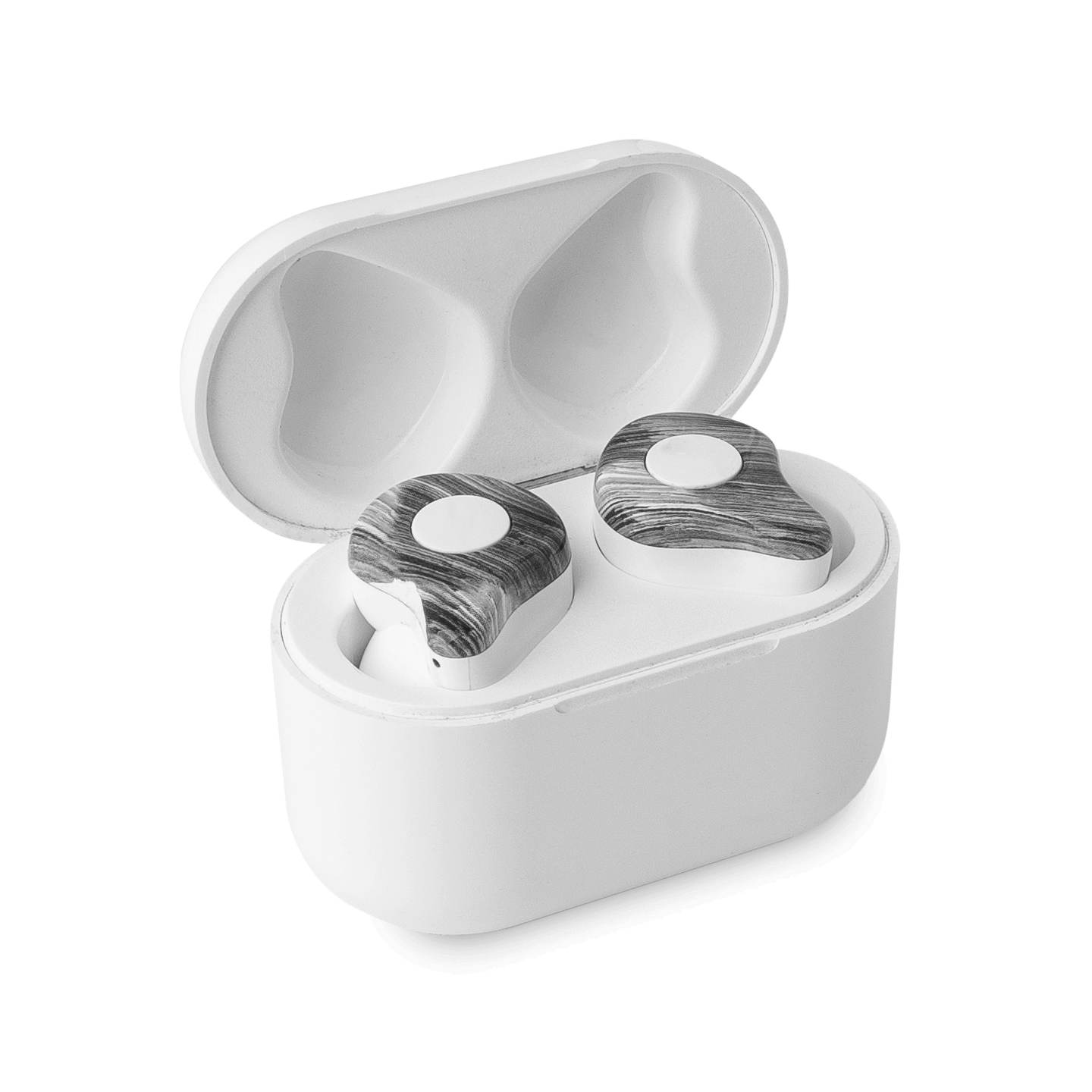The Alif Balletto family of Bluetooth Low Energy 32-bit microcontrollers provides up to:
4 MB
Of Integrated Memory at a 1:1 NVM/RAM Ratio
46 GigaOPS
Of Pure Edge ML Acceleration
22 X
Audiomark/MHz Compared to Cortex-M4
Sub 16 mm²
Ultra-Small Package Size
The Balletto family is a complete AI/ML microcontroller solution for connected IoT platforms with integrated Bluetooth Low Energy 5.3 and 802.15.4 wireless subsystem and a dedicated network co-processor, enabling connectivity without the need for a separate chip. Employing the same architecture as the Ensemble family, Balletto utilizes the Cortex-M55 CPU plus the Ethos-U55 neural processor for amazingly efficient Edge ML processing.

Multi-Protocol Wireless Connectivity for On-Device AI/ML Applications

Bluetooth Low Energy
The Balletto family of wireless AI/ML MCUs supports the latest Bluetooth Low Energy standards for ultra-low power battery-operated applications requiring excellent RF performance.

Matter
Balletto MCUs have the capability to enable Matter-certified products that are interoperable and easily plug into other Matter-certified devices, supporting the latest demands of the rapidly growing Smart Home ecosystem.

Auracast
Full support of both Bluetooth LE Audio and Auracast broadcast audio with Balletto MCUs is enhanced by the on-chip AI/ML and DSP functions that enable developers to expand their own innovation in highly differentiated audio products.
The World’s Most Power-Efficient and Advanced BLE Microcontroller
The category-defining Alif Balletto family brings together advanced local neural and vector processing with an exceptionally low-power BLE wireless subsystem, plus extensive on-die memory density. Combined, these processors deliver a record-setting 50x boost in machine learning performance and inference efficiency versus MCUs with no neural processors. This opens a new frontier for battery-powered EdgeML applications. Balletto also provides iron-clad security, multiprotocol connectivity, an extreme level of hardware integration in a minimal footprint, and amazing flexibility for application software.
Purpose Built Multi-Core Architecture
- Cortex-M55 160MHz application CPU with Helium Vector Extension accelerating DSP
- Arm Ethos-U55 NPU with 128 MACs per clock
- Dedicated RISC-V Network CPU
- Dedicated Cortex-M0+ security CPU

Power Consumption
- aiPM™ technology intelligently controls eight power domains
- 1.5mA RF Rx Current (1Mbps BLE)
- 2.0mA RF Tx Current (0dBm Tx Pout)
- 700nA Stop Mode
- 22uA/MHz Run Current
- 22nm FD-SOI Lowest Leakage Transistors

Minimized Footprint
- Sub 16 mm² package
- Few external components
- Low rBOM & large on-die memory

Efficient Multi-Protocol Radio
- High BLE link budget
- Widest BLE Tx power output range
- Simultaneous BLE & Matter operation

Audio Signal Processing
- Lowest latency and highest efficiency
- LC3 Decode/Encode with Vector Processor
- 2534 Audiomark Score – providing the best acceleration for key audio benchmarks

Hardware Accelerated Sensor Fusion
- Helium Vector Processing & Ethos-U55 NPU rapidly resolve complex sensor fusion workloads
- High precision analog inputs and outputs
- Several microphone and sensor inputs, plus a camera interface

Ultra-Low Power Wireless with On-device AI/ML Processing
Balletto builds upon Alif Ensemble capabilities with the addition of BLE 5.3 and IEEE 802.15.4 wireless connectivity.

Solutions with Alif Balletto Microcontrollers
Microphones
Connect up to 14 microphones through digital PDM or I2S interfaces, and alternatively through analog ADC interfaces.
Sensors
Connect a wide array of sensors through digital interfaces such as I3C, I2C, SPI, or alternatively connect though analog interfaces such as fast SAR ADC, 24-bit sigma delta ADC, or comparators. Sensor types include blood oxygen, pressure/strain gauge, light, temperature, air quality, chemical signature, and accelerometers / gyroscopes /magnetometers for position and movement.
GPIO
B1 devices have up to 77 General Purpose I/O pins (shared with peripherals) with flexibility to choose a mix of 1.7V to 3.6V voltage levels.
OctalSPI
One high-speed OctalSPI interface is available for external memory such Flash and PSRAM devices to expand code and data beyond the on-chip memories if required. Both interfaces are capable of eXecute-In-Place (XIP), HyperBus protocol, and provide up to 160MB/sec throughput. External memory can be encrypted for security and their contents are automatically decrypted on-the-fly when consumed by the B1.
Speakers / Audio Codecs
B1 devices can connect up to 3 pair of stereo external speakers through a codec.
Debug port
USB-FS or -HS with its 480 Mbps PHY interface bandwidth can be used to connect factory production or service equipment.
Sensors
Connect a wide array of sensors through digital interfaces such as I3C, I2C, SPI, or alternatively connect though analog interfaces such as fast SAR ADC, 24-bit sigma delta ADC, or comparators. Sensor types include blood oxygen, pressure/strain gauge, light, temperature, air quality, chemical signature, and accelerometers / gyroscopes / magnetometers for position and movement.
Sensors
Connect a wide array of sensors through digital interfaces such as I3C, I2C, or SPI including accelerometers / gyroscopes / magnetometers to detect precise position and movement.
Microphones
B1 devices can connect up to 14 microphones through digital PDM or I2S interfaces, and alternatively through analog ADC interfaces.
Display
Balletto B1 processors drive color display panels directly using either a 24-bit RGB or a 2-lane MIPI-DSI interface up to VGA resolution at 24-bit color depth at 30 fps. A 2D-GPU accelerates vector-based graphical applications for stunning user interfaces.
GPIO
B1 devices have up to 77 General Purpose I/O pins (shared with peripherals) with flexibility to choose a mix of 1.7V to 3.6V voltage levels.
Sensors
Connect a wide array of sensors through digital interfaces such as I3C, I2C, or SPI including accelerometers / gyroscopes / magnetometers to detect precise position and movement.
Battery Management System
Monitor the state of the battery and manage its environment by controlling the load and charge currents and balancing the charge among cells.
Wireless Module
Simple connection to external wireless RF modules is enabled through SDIO for high throughput, or through SPI or UART for low-power Wi-Fi or cellular modules.
Display
B1 wireless processors drive color display panels directly using either a 24-bit RGB or a 2-lane MIPI-DSI interface up to VGA resolution at 24-bit color depth at 30 fps. A 2D-GPU accelerates vector-based graphical applications for stunning user interfaces.
OctalSPI
One high-speed OctalSPI interface is available for external memory such Flash and PSRAM devices to expand code and data beyond the on-chip memories if required. Both interfaces are capable of eXecute-In-Place (XIP), HyperBus protocol, and provide up to 160MB/sec throughput. External memory can be encrypted for security and their contents are automatically decrypted on-the-fly when consumed by the B1.





